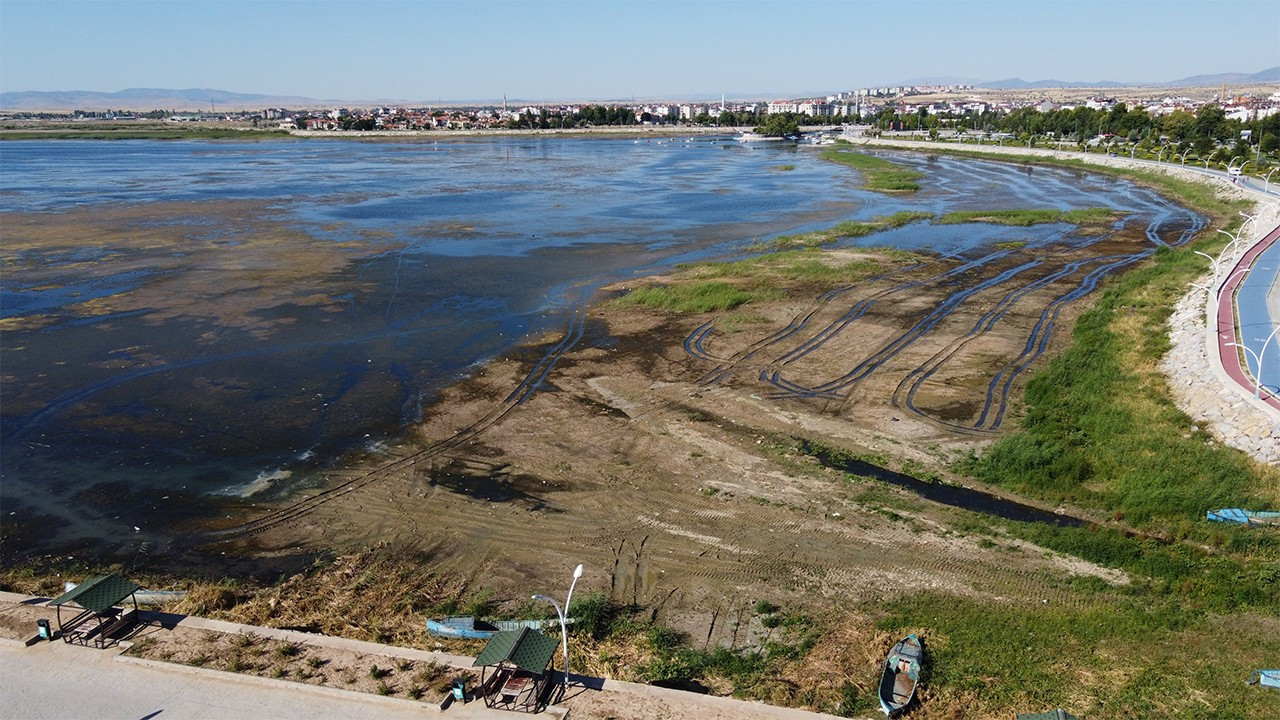Drought and development threaten future of 2,700-year-old lake in eastern Turkey
Historic droughts in Turkey have led to record-low water levels and crop shortages. Now, they’re threatening the future of 2,700-year-old Keşiş Lake in the eastern province of Van. If development around the lake is not curbed and precautions to protect the lake are not taken, it could disappear entirely.
İdris Yılmaz / DUVAR
Two months ago, Keşiş Lake in Van, in eastern Turkey, was renamed “Turna Lake” and designated a “sensitive area that needs protection.” This designation was meant to protect the lake as a natural wonder - instead, water levels have now dropped to a historic low and the lake is in danger of disappearing entirely.
According to the head of the Van Civil engineering chamber of the Union of Chambers of Turkish Engineers and Architects, Mihail Atik, the lake has been endangered by the government-backed development that occurred around the lake after it was deemed “protected.”
Keşiş Lake was built 2,700 years ago by King Rusa II of Urartu kingdom (otherwise known as the Kingdom of Van). He dammed a small river valley and the lake was born. It has long been a destination for tourists, especially in the spring, when the multicolored foliage around the lake is in full bloom.
Turkey has been in the midst of a historic drought, with water levels dropping throughout the country. Dams that supply water to Istanbul, Turkey’s largest city, are dangerously low, and riverbeds throughout the country are dry. These droughts have similarly threatened Keşiş Lake and led to a drop in its water levels. However, according to Atik, the degradation of the lake has been exacerbated by human intervention.
When a natural formation in Turkey is deemed by the presidency a “sensitive area that needs protection,” it will ostensibly be protected as a natural wonder. However, this protection is undertaken by the government and the designation allows for the development of ecotourism and water facilities that, at least in theory, do not interfere with the natural site.
According to Atik, since the designation was made, there has been large-scale development and “cementing” (a term in Turkish that indicates the development of cement structures) undertaken by Turkish State Hydraulic Works (DSİ) around the lake. Atik said this is a product of the registration process - it doesn’t actually take the necessary steps to preserve these natural wonders.
“There is an institution that registers such natural wonders, but while this institution is registering these places, it needs to ensure it protects them and keeps them alive,” he said. “But unfortunately, the method of registration is wrong. It is done wrong and political purposes are being pursued.”
As a result of the development around the lake, Atik says, the lake is shrinking at a rapid rate. If preventative measures are not put in place, he said, the lake could all but disappear.
“When you create these structures, you interfere with the lake’s [natural process]. You can unintentionally drain water from the lake. After a certain point, the water begins to decrease,” he said. “When the water decreases, the lake tries to feed on groundwater; it’s trying to pull it up. As the lake consumes groundwater, cracks appear in the soil - it’s in these cracks that the lake is sending us the message that it will disappear."

 Dams that supply water to Istanbul have dried up, water authority data showsEnvironment
Dams that supply water to Istanbul have dried up, water authority data showsEnvironment Rivers in western Turkey suffer from severe drought, pollutionEnvironment
Rivers in western Turkey suffer from severe drought, pollutionEnvironment 60 percent of Turkey's lakes dried up as a result of severe droughtEnvironment
60 percent of Turkey's lakes dried up as a result of severe droughtEnvironment